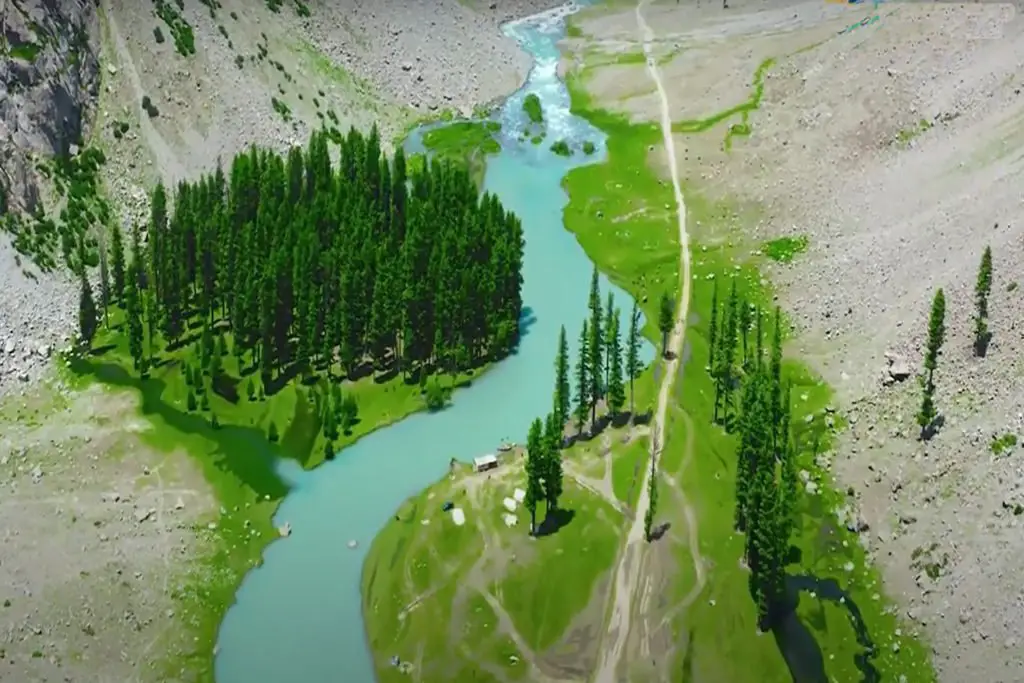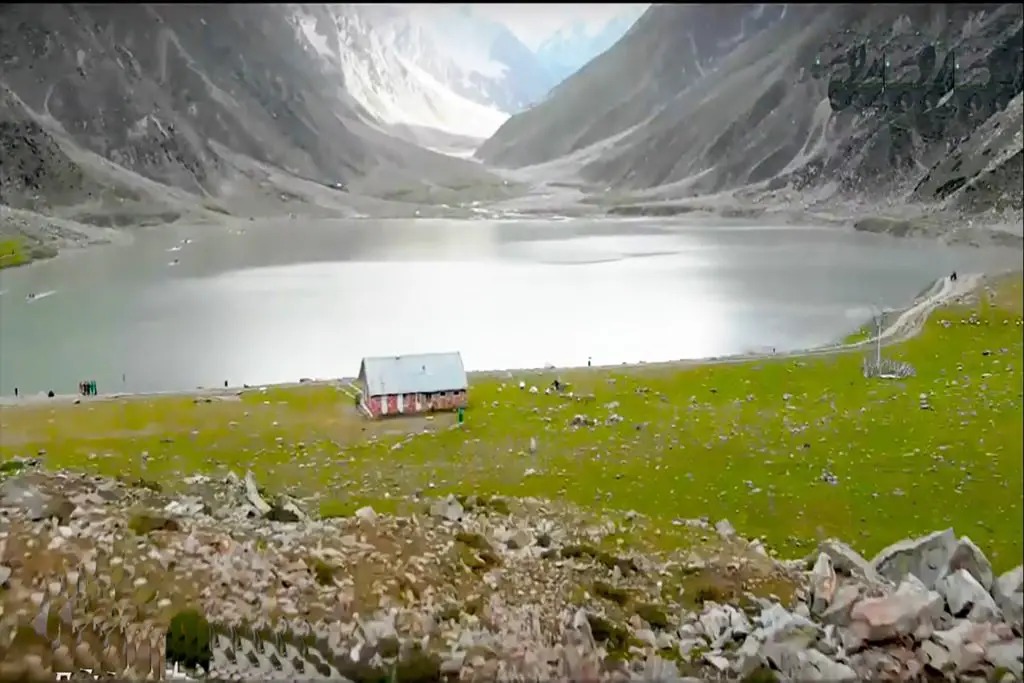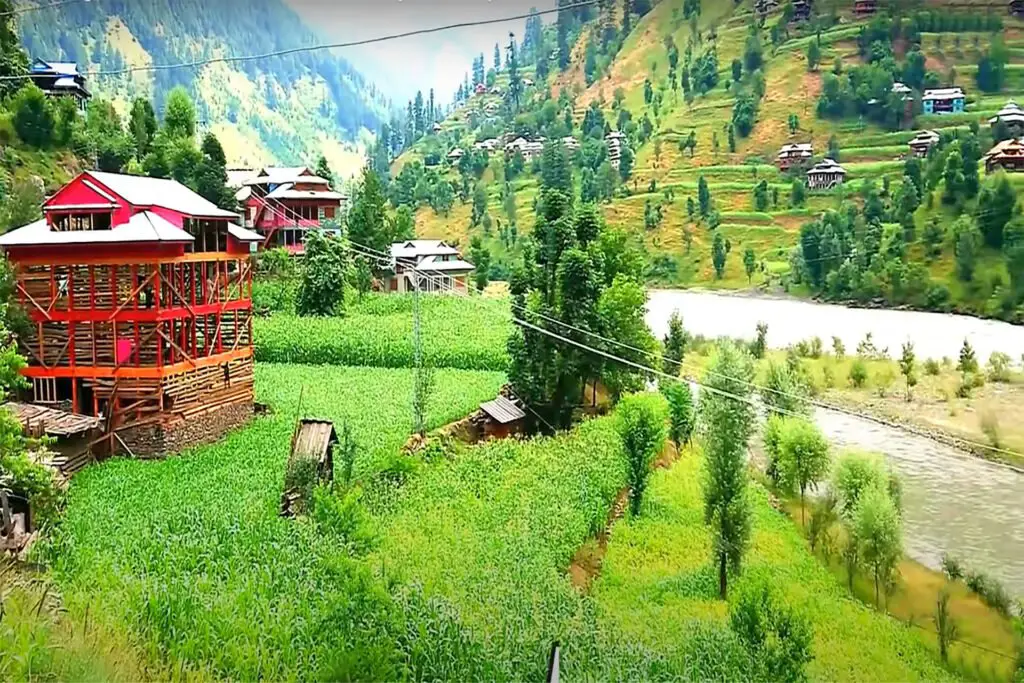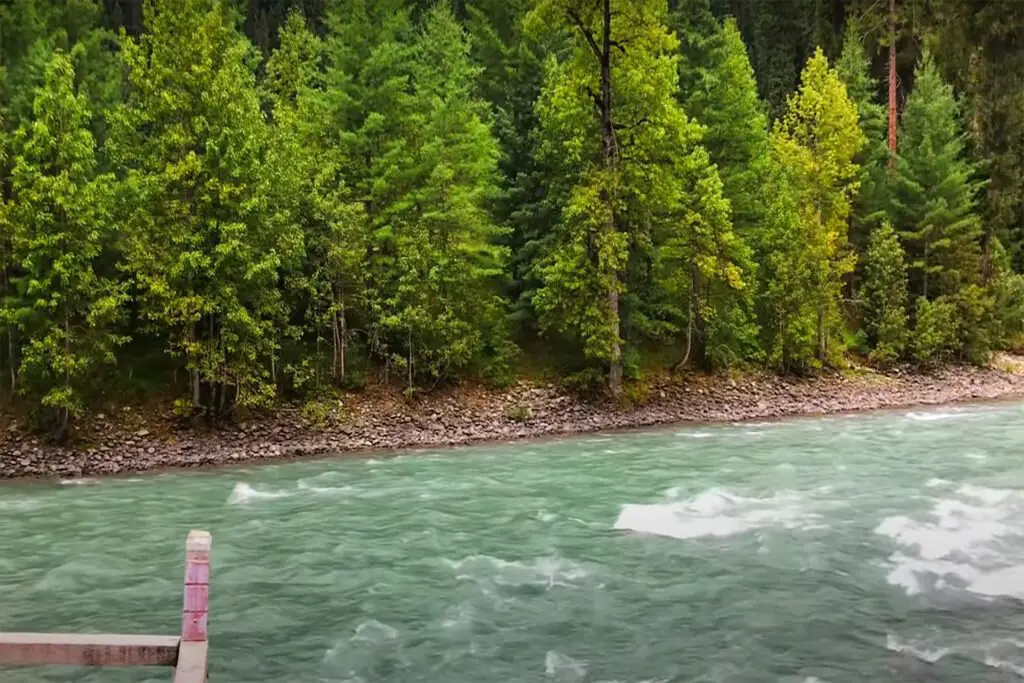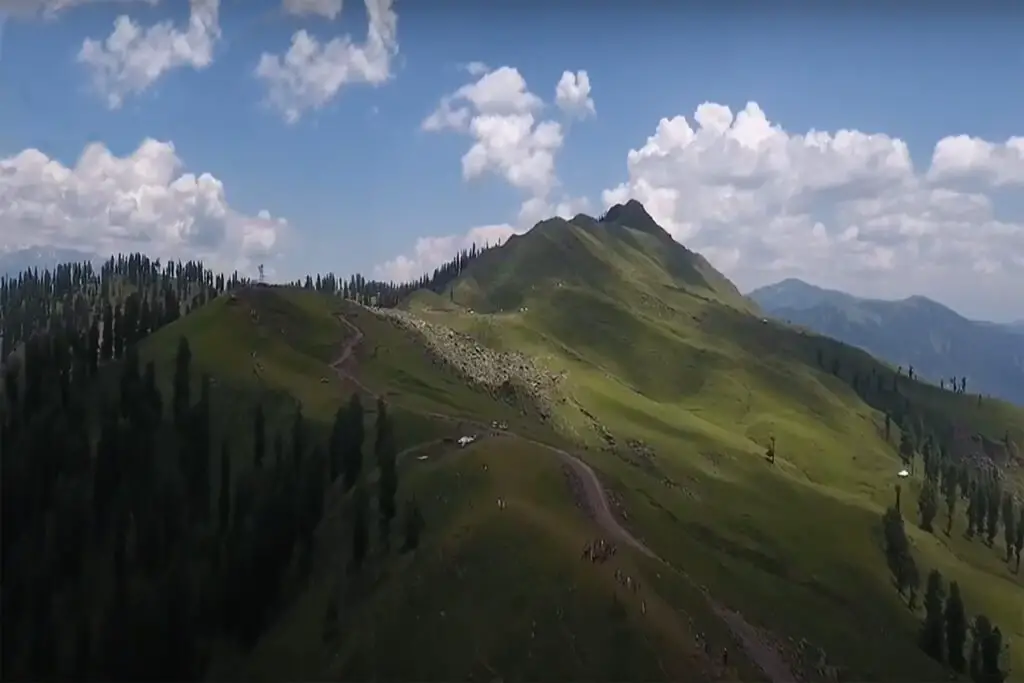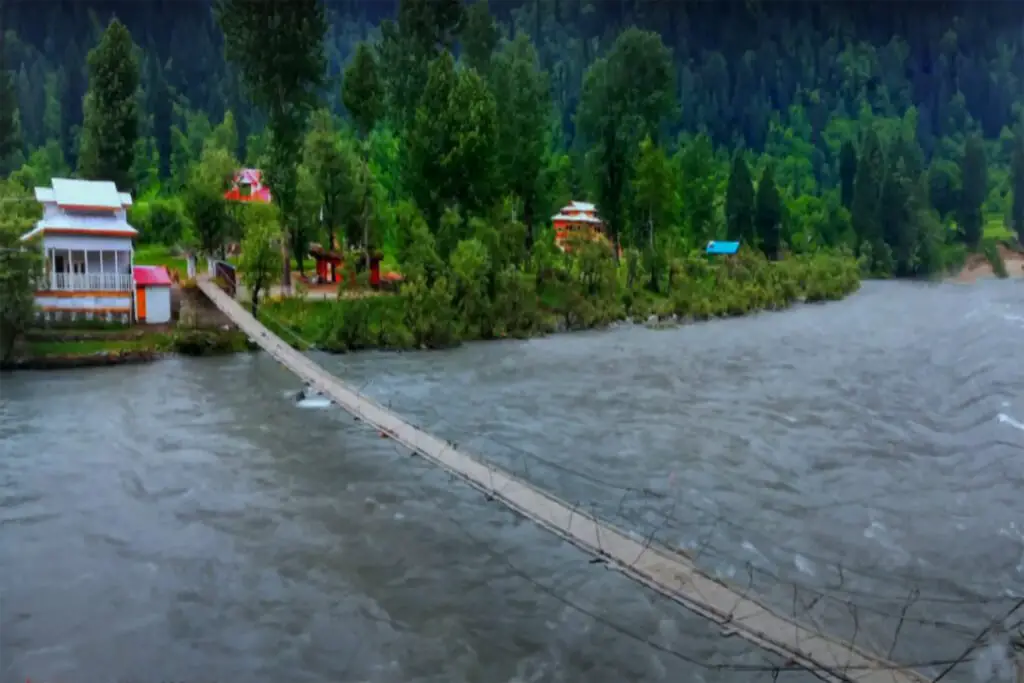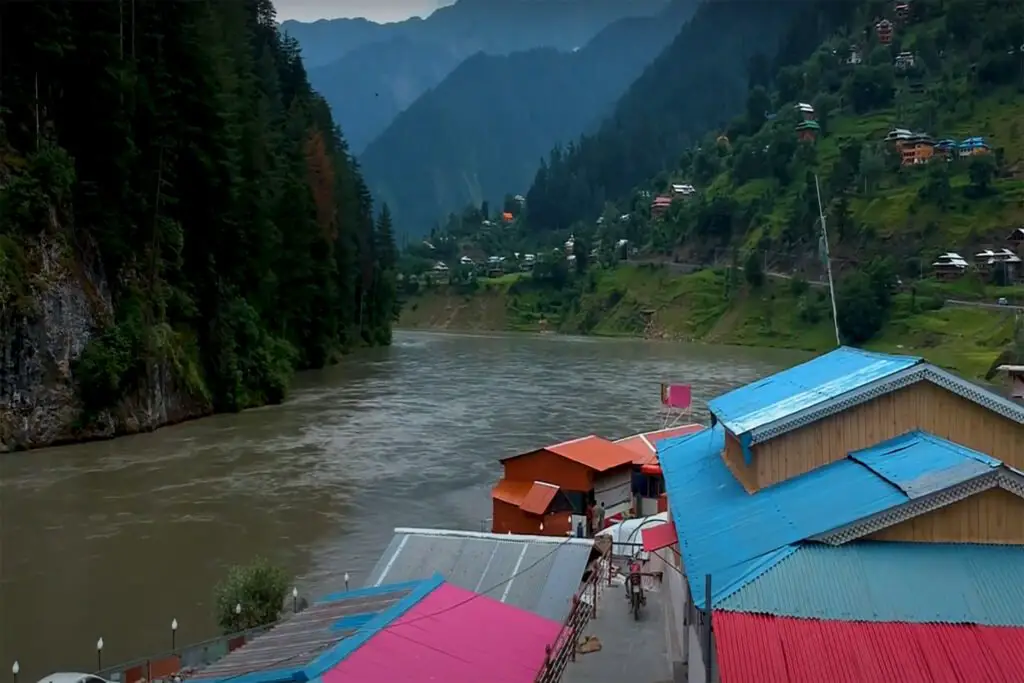Swat Valley, situated in the northwestern province of Khyber Pakhtunkhwa, Pakistan, is a dream destination for luxury travelers. This picturesque valley is nestled along the Swat River, located at approximately 35°12’N and 72°29’E, at a distance of approximately 247 kilometers (153 miles) from Pakistan’s capital, Islamabad.
Tourism in Swat Valley, Pakistan
While Swat Valley is renowned for its breathtaking natural beauty, there are still many undiscovered tourist attractions within its vast 5,337 square kilometers (2,061 square miles) area.
Swat Valley, known as the “Yusafzai State of Swat,” was an independent state until 1969, when it became part of Pakistan.
Swat Valley is surrounded by various regions, with Chitral to the northwest, Dir to the west, Malakand to the south, Buner to the southeast, Shangla to the east, Kohistan to the northeast, and Gilgit-Baltistan to the north.
History of Swat Valley
Although the Swat is geographically divided by mountains from the Peshawar plains. This valley has been a major center of global civilization. Throughout the history of the swat, the region connects China with Central Asia and Europe. Alexander the Great, Mahmood of Ghazni, and Mughal king Babar invaded India in the lower part of the Swat Valley.
History of Buddhism in Swat Valley
The Swat Valley has a rich historical and cultural heritage, with famous Chinese Buddhist pilgrims such as Fa-Hsien, Sung Yun, Hsuan-tsang, and Wu-kung visiting the region at various times. These pilgrims described Swat as a fertile and prosperous land, abundant in crops, with a pleasant climate, picturesque scenery, and numerous Buddhist monasteries.
In the Butkara area of Swat, near present-day Mingora, Italian archaeologists have uncovered ancient tombs that provide insights into the region’s long history. Scientific analysis of a skull discovered in the area suggests that the Torwali people, similar to the present inhabitants of Swat Kohistan, have ancient roots in the valley.
During the reign of Emperor Ashoka, who embraced Buddhism and promoted it, several rock-mass inscriptions and stupas were established. Asoka initiated the tradition of erecting stupas to enshrine relics of the Buddha and his disciples, contributing to the flourishing of Buddhist art in the region. This historical and cultural legacy has left a profound mark on the Swat Valley.
Archeology of Swat Valley
The archeology of Swat Vally contains amazing ancient remnants of the valley such as stupas, monasteries, viharas, castles, castles, petroglyphs, sculptures, rock carvings, painted shelters, and stele scattered in the swat valley. Archaeological excavations at several hundred archeological sites provide evidence of a cultural connection between Swat and East and West that spans 5,000 years of history.
Switzerland of Asia
The British Queen Elizabeth II during a visit to Swat in 1961 called Swat “Swiss of the East (Pakistan / Asia)” because of its similarity to the country and its similarity to local beauty and Switzerland. In addition, the Swat Valley has a pleasant climate and for that reason, locals and tourists call it the “paradise on earth”.
The beauty of Swat Valley – Mini Switzerland
Swat Valley is renowned for its incredible natural beauty, featuring a diverse range of wildlife amid stunning landscapes. The region boasts picturesque rural areas, lush forests, and impressive mountains, creating an ideal habitat for wildlife and a popular tourist destination.
The Swat Valley is characterized by its pristine lakes, freshwater rivers, natural springs, enchanting waterfalls, and a delightful climate. These natural elements collectively make it a paradise for tourism in Pakistan.
The summer and winter activities in Swat are well-known and attract tourists from around the world. During the summer, Swat is famous for activities such as hiking, trekking, camping, zip-lining, chair/cable car rides, regular vacations, and honeymoon trips.
In the winter months, Swat transforms into a hub for sports activities, making it a sought-after tourist destination in Pakistan. National and international tourists flock to the Swat Valley, situated at an elevation of 2,804 meters (9,199 feet), to partake in skiing, snowboarding, sledding, ice hockey, bandy, speed skating, curling, and more.
Most Popular cities of Swat Valley
Saidu Sharif (Capital)
Saidu Sharif has served as the political capital and administrative capital of the Swat region since the founding of the State and maintained that position until the unification of the State. As the capital, Saidu Sharif runs swat central government offices, institutions of higher learning, health centers, etc.
The Saidu Sharif Stupa (archeology 1963-1982) is a monument to the existence of swat Buddhists. This is evidence of Buddhism in the Swat Valley between 25 BCE and the end of the first century. Another important tourist attraction at Saidu Sharif is the Swat Museum, which displays thousands of artifacts of the pre-Buddhist period and prehistoric Buddhist artifacts.
Mingora Bazar (Business Center)
Mingora Bazar is a central swat business center near Saidu Sharif 2.6 km (1.6 miles). People around the village came to the town of Mingora bazaar (Market) to buy some business items.
The bustle of the Mingora market continues until late at night. In the center of the city, the locals near the visitors enjoy shopping and food until late at night.
The Mingora Bazaar is a great place for tourists to stay or prepare and shop at the last minute while en route to the most dangerous areas of the swat. There are thousands of shops throughout the city of Mingora selling all day.
Mingora has a variety of hotels, restaurants, cafes, cafes, and western restaurants that offer both local and fast food.
Swat
Swat District is one of the seven districts of the Malakand Division. The region and its administration fall under the jurisdiction of the Khyber Pakhtunkhwa (KP) Government in the province of Pakistan.
The Swat District Administration governs its territory and serves as the capital of the Malakand Division in general. It therefore governs all seven districts of Malakand Province namely Buner County, Chitral District, Lower Dir District, Upper Dir District, Malakand District, Shangla County, and Swat District.
The Swat region has a total of seven subdivisions (aka Tehsils) namely Babuzai, Matta, Khwaza Khela, Barikot, Kabal, Charbagh, and Bahrain. Each Tehsil contains a specific number of Union councils. There are 65 Union Councils in the District Swat which means 56 rural and 9 urban. Under the new local government program, District Swat owns 67 wards. This also divides 170 town councils and 44 local councils.
Best Places to Visit in Swat Valley
Swat is also famous for its beautiful mountains located in the foothills of the Hindukush mountain range, where you can hike, hike, hike, and even meditate. The height of the Swat River valley, at the southern edge of the region, is over 1,600 feet [600 m] and rises rapidly toward the north.
There are several mountain peaks ranging from 4500 to over 6000 m above sea level. The Swat region, consisting of the flowing Swat River, is also home to green valleys, glaciers, forests, meadows, and plains. The region has a wide range of geology.
Swat Valley Lakes
Swat is blessed with beautiful natural lakes. Its impressive lakes not only add to the beauty of the landscape but also attract tourists and locals alike with fishing, mountaineering, water sports, or just relaxing in nature. Swat lakes have a rich history, and the great fairy tales add to the magic of their landscapes.
A stunning view of the beauty of the Swat lakes and the fresh water that makes it an ideal setting. Swat Valley has many lakes and many large freshwater lakes. The valley is home to about 35 famous lakes, each with its own distinctive and shiny landscapes. These lakes are home to many species of plants and animals.
Swat languages
Swat Home Language is the best-spoken Pasto language across the region. Other widely understood Swat languages are Urdu, English, and Persian. As an English-speaking visitor, you will always find an easy local person to contact you in English.
Swat Weather
The climate in Swat is characterized by variable temperatures and frequent changes, with generally mild and rarely very hot conditions. Despite being a relatively small valley, one of the most remarkable aspects of Swat’s climate is its variability across different regions. It’s possible to experience ‘four seasons in one day,’ and within a 20-30 minute walk, you can encounter completely different weather.
During the spring months in Swat, which include March, April, and May, you can expect moderate temperatures ranging from approximately 7°C (45°F) to 13°C (55°F).
Summer in Swat, spanning June, July, and August, is typically the warmest season, with temperatures typically falling between 15°C (59°F) and 17°C (63°F).
As autumn sets in (September to November), Swat experiences temperatures in the range of about 8°C (46°F) to 14°C (57°F).
The winter months, encompassing December, January, and February, are generally the coldest in Swat, with temperatures fluctuating around 5°C (41°F).
The Best Time To Visit Swat
Given 365 days a year, from mid-March to the end of May the best time to visit Swat when the weather is inclement. From June until the end of August is usually the best time to visit the swat when the suburbs of Pakistan are subject to extreme heat waves and shelter in this cool refreshing valley is much needed. The best time to ski and other winter sports is from December to the end of February when the upper swat areas are under good snow cover and make for great skiing and winter sports.
In conclusion, March to November is the best time to visit the swat for family and children trips, school holidays, city holidays, photo breaks weekends, etc. December to February is the best time to visit the swat valley for winter sports or winter holidays and sacrifices.

